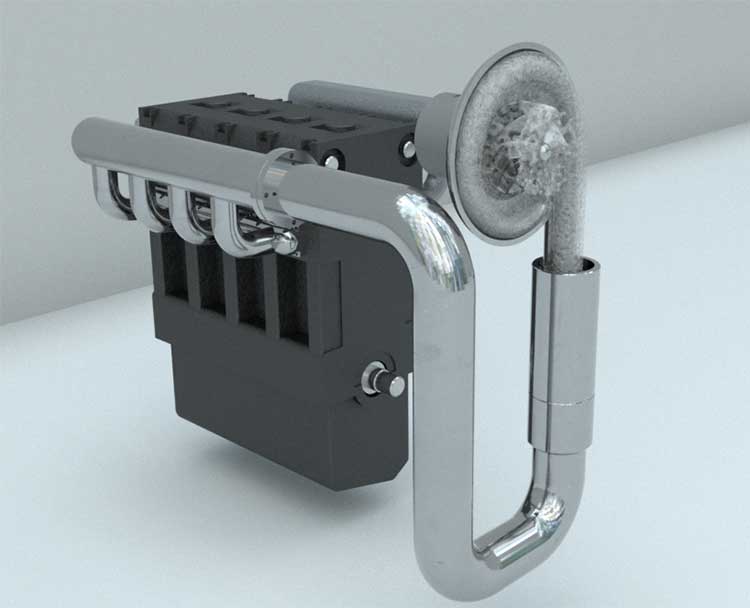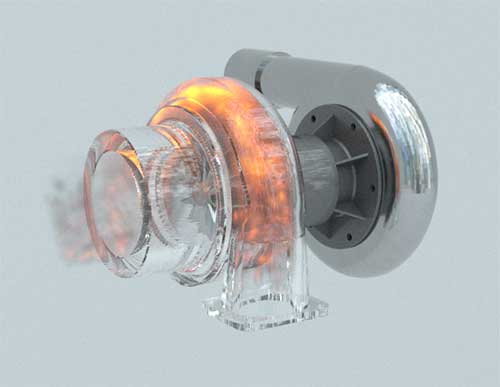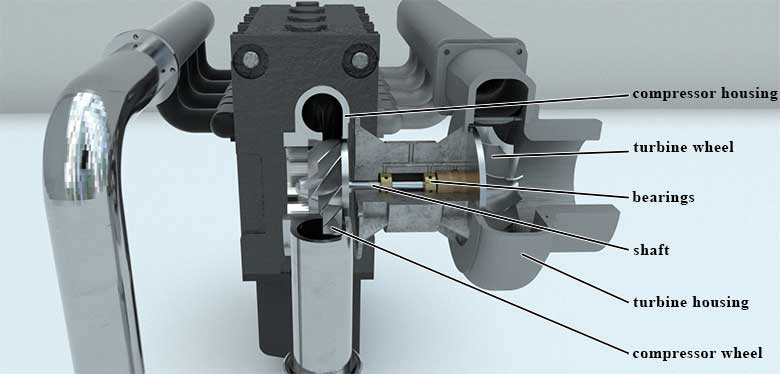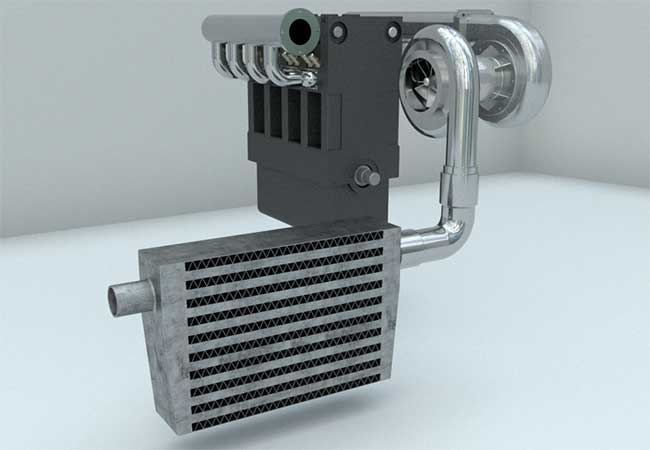How does a turbocharged car engine work?
Air can either enter the engine under the influence of atmospheric pressure at the moment when the piston moves and increases the volume of the chamber, or be supplied with the help of a special compressor. In the second scenario, there will be more oxygen in the engine, and therefore it will be able to produce more power.

An impeller (compressor wheel) is installed in the compressor. When rotating, the blades of the impeller force air to move. Air particles are pushed to the perimeter of the impeller and enter the volute, from where the compressed air flows out of the air outlet of the compressor, and then moves on into the engine. In order for the compressor to force air into the engine, the shaft on which the impeller is mounted needs to be rotated.
A turbocharging is based on the utilization of residual energy from the exhaust gas flow. For this energy to be used, a turbine is necessary. Inside a turbine the opposite happens: the moving gas causes the wheel to rotate.

The turbine wheel can be installed in such a way in the exhaust system of the engine that the moving particles of gas will act upon the blades of the wheel. As a result of this action, the wheel will rotate. Then, if the turbine wheel is connected to the compressor, this creates a turbocharging system. In this case, the compressor wheel will be made to rotate by the turbine.
A turbocharger design

The main elements of the turbocharger:
- turbine housing,
- turbine wheel,
- compressor housing,
- compressor wheel,
- shaft,
- bearings.
How does an entire turbocharged engine work?
First, the cylinder is filled with a mixture of fuel and air.
When the preset compression ratio is reached, the mixture ignites, expands, and causes the piston to move downward, rotating the crankshaft.
The exhaust gases are then forced out of the cylinder by the piston and move towards the turbine. The particles of gas act upon the blades of the turbine wheel, causing it to rotate.
The turbine and compressor wheels are mounted on one shaft. When the turbine wheel rotates, the compressor wheel also rotates, forcing air into the engine’s cylinders.
Intercooler
The exhaust gases have a very high temperature. They heat up the turbine, and from it the heat is transferred to the compressor. In addition, as air is compressed, it also heats up. When heated, air expands. Thus, what happens is that the compressor compresses the air, but at the same time inevitably heats it, and so the air expands once again. This process is inefficient. For this reason, the air exiting from the compressor’s outlet needs to be cooled. An intercooler is used for this purpose.

An intercooler is a heat exchanger. There are two types of intercoolers: air-to-air and air-to-water.